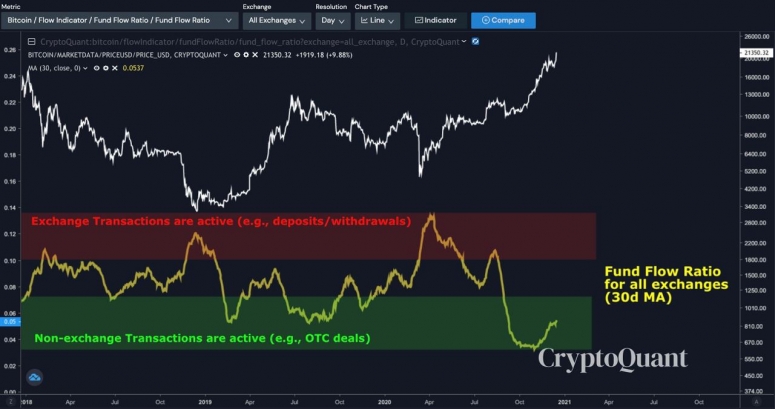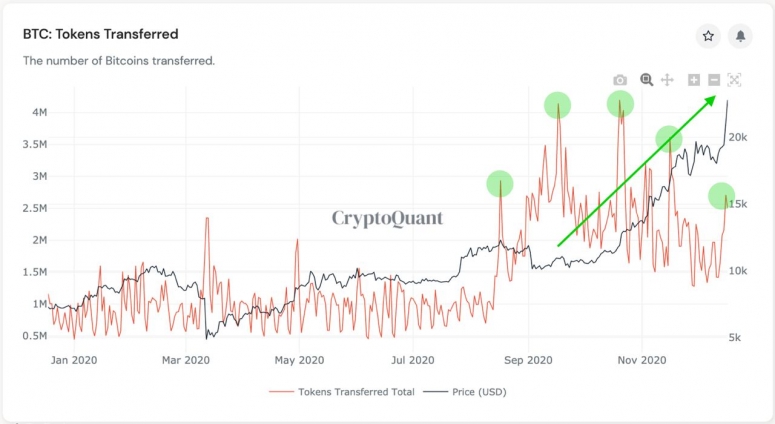Despite bitcoin trading near all-time highs, more institutions continue to buy bitcoin, and they’re using over-the-counter (OTC) trading firms to keep their purchases from impacting the overall market.
Unlike retail investors or smaller institutions that use crypto exchanges, large institutions usually trade bitcoin through the OTC market, noted John Todaro, director of institutional research at cryptocurrency analysis firm TradeBlock. That way, their transactions won’t move prices the way they would had the investors used even the largest centralized exchanges.
One reason that’s the case is OTC transactions are also much more opaque compared with trades on exchanges. Without transparent data on OTC transactions, it is difficult to track or gauge this side of the crypto market.
However, three different metrics monitored by blockchain analytics firm CryptoQuant provide an idea of what’s happening in the crypto OTC market and could give clues that in the coming weeks and months, more large institutions may come out to disclose their bitcoin positions.

When a massive bitcoin outflow takes place on Coinbase Pro, it tends to go to Coinbase’s own cold wallets for custody that hold 6,000-8,000 BTC, according to Ki Young Jun, chief executive of CryptoQuant.
“We only know it’s not going to hot wallets [because] we have their address labels,” Ki added. “Exchange users withdrawals can happen, but I would say 99% of big single transactions over 5,000 bitcoin are either internal transfers or going to custody wallets.”
For example, a closer look at the spike in bitcoin outflow that took place on Dec. 12 shows that between 8,000 and 15,000 BTC were moved out of Coinbase Pro to other cold wallets, an implication of OTC deals, Ki said.
Coinbase Custody is directly integrated with Coinbase’s OTC desk, meaning that its clients can leverage the OTC desk without having to move funds out of cold storage.
Both MicroStrategy and British investment firm Ruffer have revealed that their purchases of hundreds of millions of dollars worth of bitcoin were facilitated by Coinbase.

Another metric, the fund flow ratio for all exchanges, has gone down since the market sell-off in March. This is the ratio of network transaction volume of exchanges compared to the entire cryptocurrency transferred on the network. A lower number means fewer transactions that are done on exchanges and are instead conducted outside exchanges such as over-the-counter.
Notably, the last time the fund flow ratio was at the current level (approximately 5%) was when major crypto exchanges launched their OTC desks in early 2019.

The third metric, the total amount of bitcoin transferred on the blockchain, has continued growing. This, coupled with the decreased fund flow ratio, indicates that potential massive OTC deals from the likes of institutions are “ongoing,” Ki said.
“What we’re seeing is an entire class of investors who are new to the crypto market and want to establish positions,” Matthew Hougan, chief investment officer at Bitwise Asset Management, told CoinDesk. “They are not so much buying the dip as simply buying, consistently and over time.”








